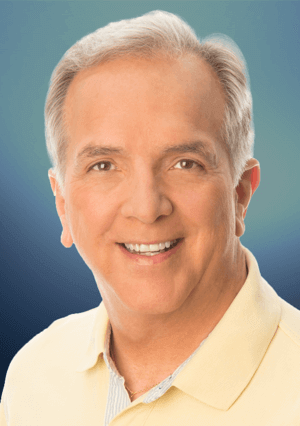|
HOME STUDIO When Voice Over Specs State 'Broadcast Quality' - What's That? Definitions In Flux Are Confusing  By Dave Courvoisier By Dave CourvoisierVoice Actor & TV News Anchor Radio used to rule.
After the telegraph and the telephone… it was tops.
Then TV came, and joined the broadcast club. Broadcast engineers were an elite class that set standards. Back then, there was a term for this category of audio called "Broadcast Quality." Not anymore.
Today, there
certainly IS a unique quality to the traditional broadcast signal, but
it doesn't match the definition of quality you'll find in Webster's: "…high grade, superior, excellence…" In
its time, the parameters that early broadcasters set for the quality of
the signal was a necessary baseline, and later a threshold or a
standard.
Then
came FM, the internet, streaming, and corporate takeovers of a dying
medium. Radio listenership dropped. RADIO & TV GET CREATIVE So they got creative. They devised
"HD" radio, and gave the sound some POP. Yet they had to overcome bad
airwaves, over-modulated DJ's, disenfranchised clients, hyped imaging,
disillusioned listeners, and bad speakers. Amid all this, radio "broadcast quality" became almost distorted. Similarly,
TV started punching up its sound signal. All manner of equipment was
devised to process and compress the signal for intense "presence" in
the ears. But to compete with Hollywood, internet streaming and an
ever-improving video quality, TV broadcast sound could barely hold its
own. People noticed the boosted volume when commercials popped-up… and
it was not good. BUT FOR VOICE OVER? So THAT's what "broadcast quality" is today - and you don't want any part of it in your voice over product. Believe
me, I was and still am in traditional broadcasting, and you would not
believe the racks of equipment in the engineering area and at the
transmitter site for boosting signal.
When
COVID-19 came along and the cushy network and professional studios of
(mostly) LA and NYC got shuttered, the home studio began to reign supreme
like never before. Talent that depended on those
professionally-engineered studios for their livelihood scrambled to
learn the intricacies of home studio acoustics. By it's very nature, private home studios are different from the pro shops. Not worse, just different. Much different.
So
much so, that the pro audio engineers began to fear for their future as
home studios proliferated. They convinced a lot of their clients to
impose draconian demands in their instructions to the auditioning voice
talent - and alla sudden, BROADCAST QUALITY became a thing again. Talent
began to notice that clients were specifying minimum equipment standards, -even naming certain microphones and pre-amps that talent MUST USE to
qualify for the audition. Some clients even began to demand that their
engineers take remote control of the talent's equipment during the
session to ensure "broadcast quality." It was - and is - a bunch of hooey. DON'T GET PUNCHY Even now that COVID is beginning to subside and pro shops are opening again, "broadcast quality" survives in audition directions. Don't believe it.
Don't
process and compress, and apply all manner of effects to "punch up"
your audition. Clean up some noise if you must, and maybe normalize. That's it. Even
if your voice is going out over radio and/or TV, don't try for
"broadcast quality" in your audition or the final product. If those
clients/stations/broadcast outlets want to screw-up the sound when they
send it up the tower, that's their business. Chances are, what's coming
out of your studio is already much better than "broadcast." If you saw
the audio booths in the TV stations I've worked at, it would send
shivers up your spine. So make your auditions plain vanilla neutral and clean. It's the talent they're paying for, not your audio engineering prowess. Now if we could only get clients to dismiss the ridiculous and nebulous "conversational" direction in copy, we'd be set! -------------------- ABOUT DAVE Dave Courvoisier is a voice actor and audiobook narrator based in Las Vegas - and also an Emmy Award-winning broadcaster, producer and morning TV news anchor on Good Morning Las Vegas at ABC affiliate KTNV, Channel 13 (also seen as live stream on KTNV.com). A former president and a founding member of the World-Voices Organization (WoVO), he also writes Voice-Acting in Vegas, a daily blog of voice over adventures, observations and technology, and is author and publisher of the book, More Than Just A Voice: The Real Secret To VoiceOver Success, now in its second edition. Email: CourVO@CourVO.com Web: http://www.courvo.com Blog: https://courvo.com/blog More Than Just A Voice - 2nd Edition |
As of the NEW website launch, 03/22/2012







.png)


I agree. as long as you record through a pro mic chain and you can't hear the room in the recording, its good to go. I think that's what casting was trying to say by using the phrase "broadcast quality," unfortunately they didn't explicitly define the term and caused a lot of confusion. As you know, the REAL broadcast quality gets established in the mix and transmission of the signal.
Carl Bishop
Dare I say, I almost agree? We can never be sure what a potential client will play our demos on, so a bit of squashing is probably to our advantage. Maybe more familiar to them, too.
As for radio and TV sound in general - here in UK anyway - indeed in decline. Body-worn mics on actors, lapel mics under presenters' chins, garbled web feeds, soundtracks out of sync, over-compressed by the platforms (how dare they!).
We now need an alternative term to 'broadcast quality' as it no longer implies something nice.